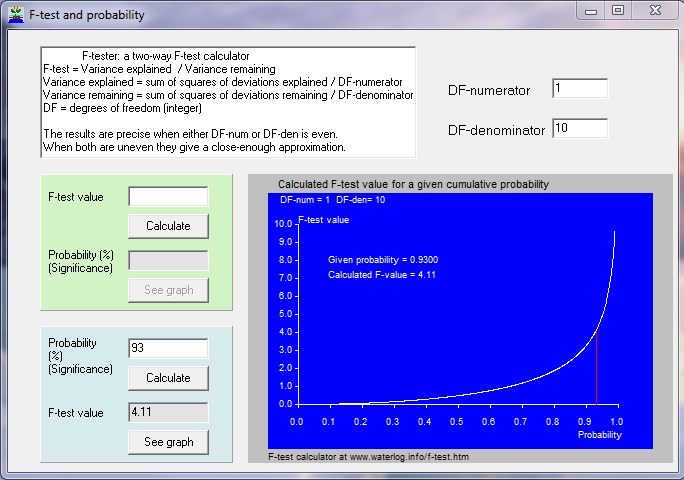|
The F-test is used in analysis of variance (Anova) to test the difference between standard deviations under varying conditions. The calculator program gives the probability of an F-test, given the F-value and degrees of freedom of numerator (DF1) and denominator (DF2), and reversely the value of the F-test given the probability. For examples see: Anova table. Screenprint of the two-way Fisher F-test calculator model: 
|
|
Experiences:
For improvement, I am interested to learn about
your experiences with F-test. For this there is
a contact form. |
Download:
F-test calculator
F-distribution calculator
Go to:
software
& models
articles
& manuals
reports
case studies
FAQ's
& papers
home
page


